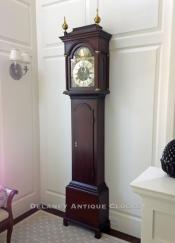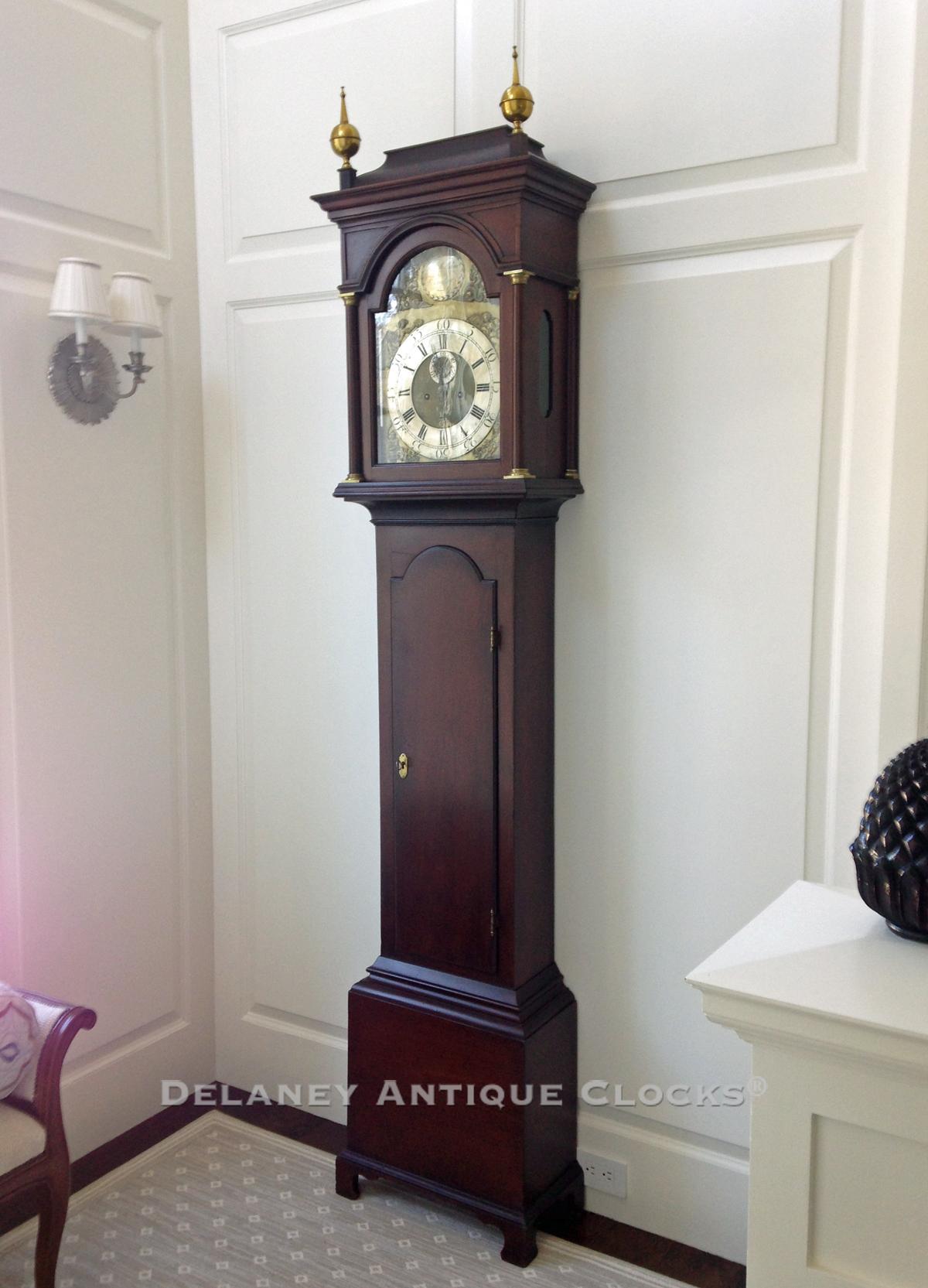This pre-revolutionary tall clock becomes the focal point of this room. Gawen Brown
Gawen Brown was born in England in 1719 and died in Boston, Massachusetts, at the age of 82 in 1801. He came to this country sometime before 1749. That year, on February 6, he advertised in The Boston Evening Post that he was a "...Clock and Watchmaker lately from London, Keeps his shop at Me. Johnson's Japanner, in Brattle Street, Boston, near Mr. Copper's Meeting House, where he makes and sells all sorts of plain, repeating and Astronomical Clocks, with cases plain, black walnut, mahogany or Japann'd or with out." During his lifetime, much was written about his making and installing a tower clock in the Old South Church in Boston. This Boston landmark was erected in 1730 without a clock. Brown installed his clock sometime between 1768 and 1770. Between 1752 and 1760, Brown moved his shop and home in Boston several times. He married three times and had a total of twelve children. On April 5, 1750, Brown married Mary Flagg. Together they had six children before she died in 1760. She was only 31 years old. His second wife, Elizabeth Byles, was the daughter of Mather Byles. Mather was a well-known clergyman who presided over the Hollis Street Church. Elizabeth lived only three more years and had no children. She died in 1763. In 1764, Brown again married, this time to Elizabeth Hill Adams. Elizabeth Hill Adams was the widow of Dr. Joseph Adams, who was the brother of Samuel Adams. Elizabeth bore him six more children. Based on several newspaper advertisements, Brown imported English clocks and watches from England. From 1789 through 1796, Brown was also listed in the business directories as a watchmaker.
Gawen Brown has been referred to as "The Tory Clockmaker." This title implies that he was loyal to the King of England before the Revolution. An article in Antiques Magazine in January of 1929 suggests that Brown left the Colonies and returned to England during the Revolution. This cannot be true because he had an extensive military career. Brown first enlisted in the Independent Company of Cadets on December 7, 1776. The Cadets were an independent organization, and accordingly, it was possible for one to hold an official rank with them as well as with another military company at the same time. He also served as a Corporal in the Rhode Island Expedition from April 15, 1777, to May 5, 1777. In April of this same year, he was appointed Captain in a Continental Regiment led by Colonel Henry Jackson. He resigned from this on October 23, 1778. In 1779 he was made Brigade Major of the Penobscot Expedition. This tenure lasted from July 2, 1779, to October 8, 1779. Brown left military service in 1781. At that time, he was a Lieutenant Colonel. The A. W. Mellon Educational Charitable Trust reportedly owns a portrait of him. Reproductions hang in the Old South Church and the Cadet Armory.
Very few Clockmakers lived and worked in New England during this early time period. Pre-Revolutionary clocks made in this country are quite rare, and as a result, very few come to the marketplace. This rare clock is typical of the early form.


